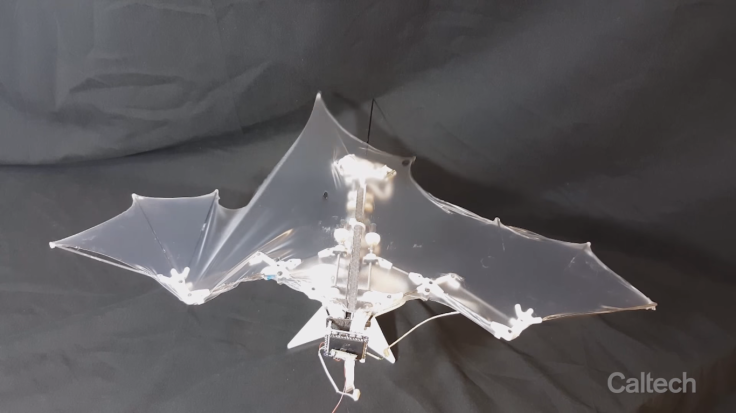US government begins initiative to develop bat-like drones powered by focussed lasers
They will be used behind enemy lines and be loaded with various sensors to gather intel.

The Defense Enterprise Science Initiative (DESI) announced last week that they are opening a $6 million (£4.4 million) science grant for the development of a new generation of drones. This time, the US government wants drones that mimic nature – specifically flying animals like bats. They also want them to be powered by focussed beams of energy.
In the announcement, DESI stated that they want "new paradigms for autonomous flight, with a focus on highly manoeuvrable platforms and algorithms for flight control and decision-making".
A report by Nextgov (NG) simply explained it as drones that fly like bats and are powered by energy beams from nearby aircraft.
The announcement for this grant said, "The biological study of agile organisms such as bats and flying insects has yielded new insights into complex flight kinematics of systems with a large number of degrees of freedom, and the use of multi-functional flight surface materials."
The US Air Force (USAF) added that "significant improvements in manoeuvrability, survivability and stealth over traditional quadcopter or fixed-wing designs" can be achieved when design follows a more naturalistic approach. That, coupled with smaller and more efficient sensors, could give these devices a better picture of the outside world.
Biomimetic, or nature-inspired, design for robots is not new. In fact, the NG report pointed out that they have been in development since the 1960s. Robots that imitate cats, dogs, snakes, people, worms and fish are already in use in various applications. What the Department of Defense (DOD) wants, however, are tactical drones that imitate animal life.
This is where the difficulty in design lies, noted the report. Getting machines to swim, walk, or even do flips is a lot easier than making them fly. This is one of the reasons why even small drones normally have fixed rotors and aerodynamic bodies.
However, this does not mean that there are no such machines available that fly like birds or bats today. While they are able to flap their wings and fly for a few minutes, they are completely useless in a battlefield situation, or behind enemy lines.
"Wireless power transmission could augment existing technologies and enable new paradigms for warfighter operations in denied environments, unmanned or autonomous surveillance and weapons systems," the announcement said.
This technology is also not entirely unheard of. A few months back, Russia announced a project that would enable satellites to power other satellites using laser beams. Similarly, for these drone bats, the energy could be beamed from "the ground or from a high-altitude platform", like a plane overhead.
The project is also keen on making these drones with "components featuring locally tunable material properties with embedded sensing and actuation".
So far, the project sounds not just ambitious, but also quite complicated – a flying animal-inspired drone made of futuristic materials that are not restricted to metals and is powered by energy beams like lasers. It should also be capable of carrying a host of sensors and other tactical reconnaissance gear.
The closing date for applications for this project is 28 February, 2018.






